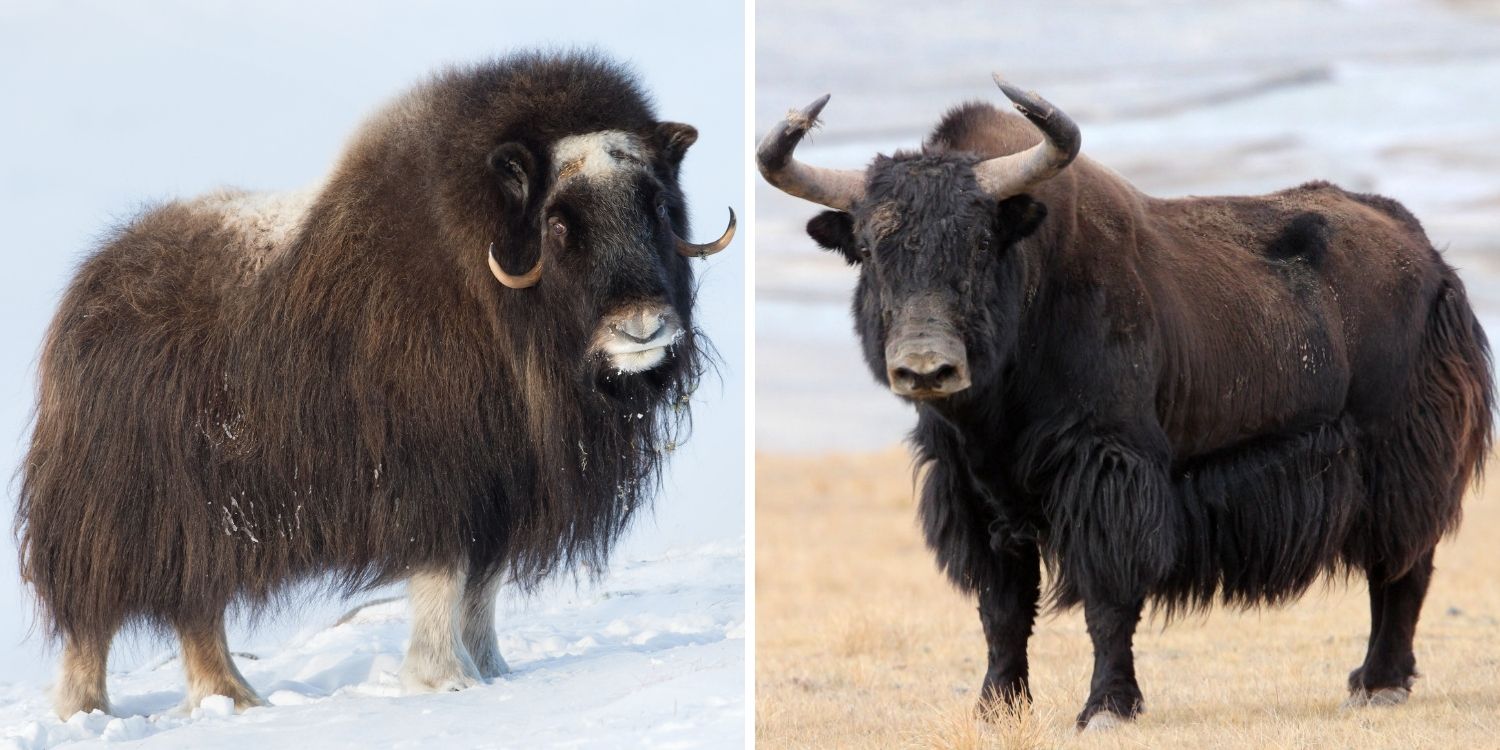
When it comes to surviving frigid temperatures and harsh landscapes, few animals do it better than muskoxen and yaks. These shaggy, horned herbivores are built for life in some of the planet’s most extreme environments. But while they may look like long-lost cousins, they’re actually quite different—biologically, geographically, and culturally.
Let’s take a closer look at what sets muskoxen and yaks apart.
Where They Live
- Muskoxen (Ovibos moschatus):
Native to the Arctic tundra of North America and Greenland, muskoxen are cold specialists found in treeless, icy expanses. - Yaks (Bos grunniens, Bos mutus):
Found in the Himalayas and Central Asia, yaks live at high altitudes, often over 10,000 feet, in rugged mountainous regions.
Not-So-Closely Related
Despite their similar looks, muskoxen and yaks are not close relatives:
- Yaks are true bovines, part of the cattle family (Bovidae, subfamily Bovinae).
- Muskoxen belong to the family Bovidae, but subfamily Caprinae (goat-antelope group), making them more closely related to sheep and goats than to cows.
They’ve evolved similar traits through convergent evolution—meaning they developed comparable adaptations to survive similar cold environments.
Physical Comparison
| Trait | Yak | Muskox |
|---|---|---|
| Size | 4.5–5.6 ft tall at the shoulder | 4–5 ft tall at the shoulder |
| Weight | 600–1,300 lbs (domestic); up to 2,200 lbs (wild) | 500–900 lbs |
| Coat | Long outer hair + dense wool underlayer | Exceptionally thick wool and undercoat (qiviut) |
| Horns | Upward-curving, narrow horns | Wide, curved horns that sweep down and out |
| Sounds | Grunts (they don’t moo) | Low bellowing or snorts |
Coat Power
Both animals are insulated by impressive fur:
- Muskoxen produce qiviut, one of the warmest natural fibers on Earth—so fine and soft it’s prized for luxury garments.
- Yaks also have a thick undercoat and coarse outer hair that helps them survive temperatures as low as -40°F (-40°C).
Role in Human Life
- Yaks are deeply integrated into human culture across Tibet, Nepal, and Mongolia. They provide milk, meat, fiber, transport, and fuel (dried dung).
- Muskoxen were once hunted to near extinction but have since been reintroduced and are now farmed in small numbers for qiviut. They’re not used for transport or milk like yaks.
Wild vs Domesticated
- Yaks come in both domesticated and wild forms (see: Domestic Yak vs. Wild Yak: What’s the Difference?).
- Muskoxen are wild, though they’ve been semi-domesticated in some Arctic regions for fiber farming.
Final Thoughts
While muskoxen and yaks are both cold-weather warriors wrapped in wool, they hail from different hemispheres and lineages. The yak is the beast of burden of the Himalayas, while the muskox is the resilient survivor of the Arctic tundra. Both are remarkable examples of nature’s ability to adapt—and thrive—against the coldest odds.
Disclaimer: This blog post is for edutainment purposes only and may not be entirely accurate.






